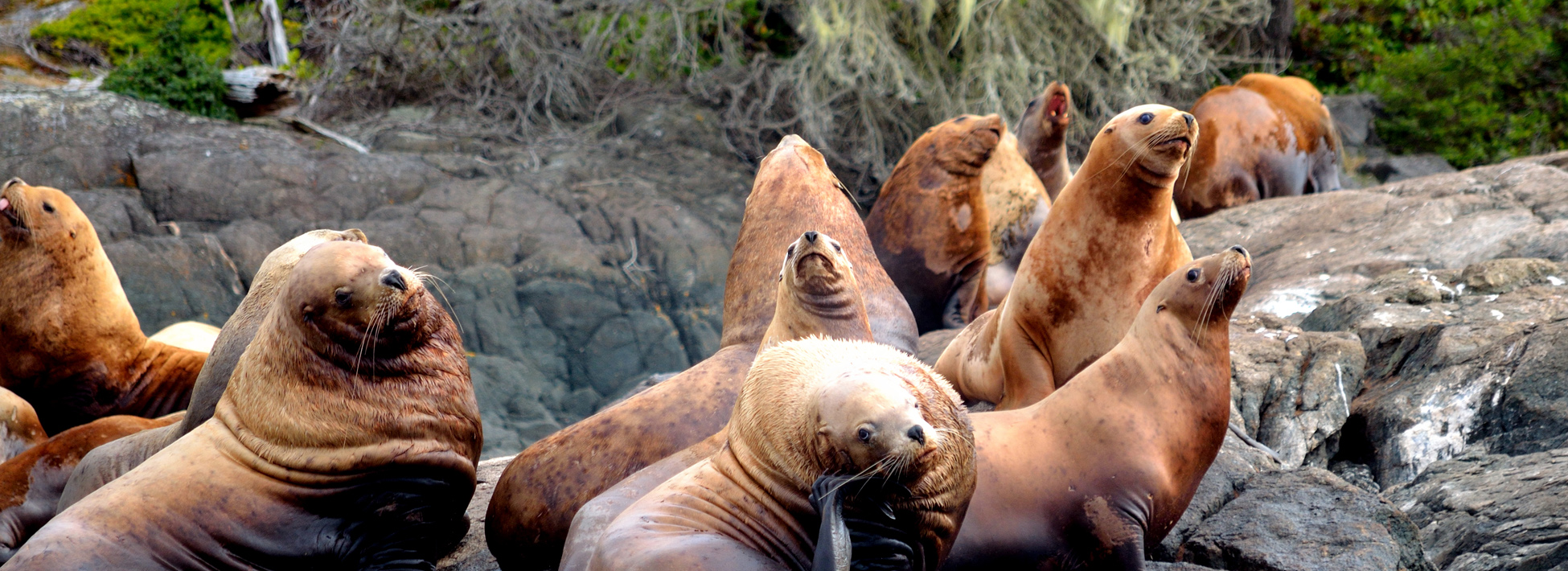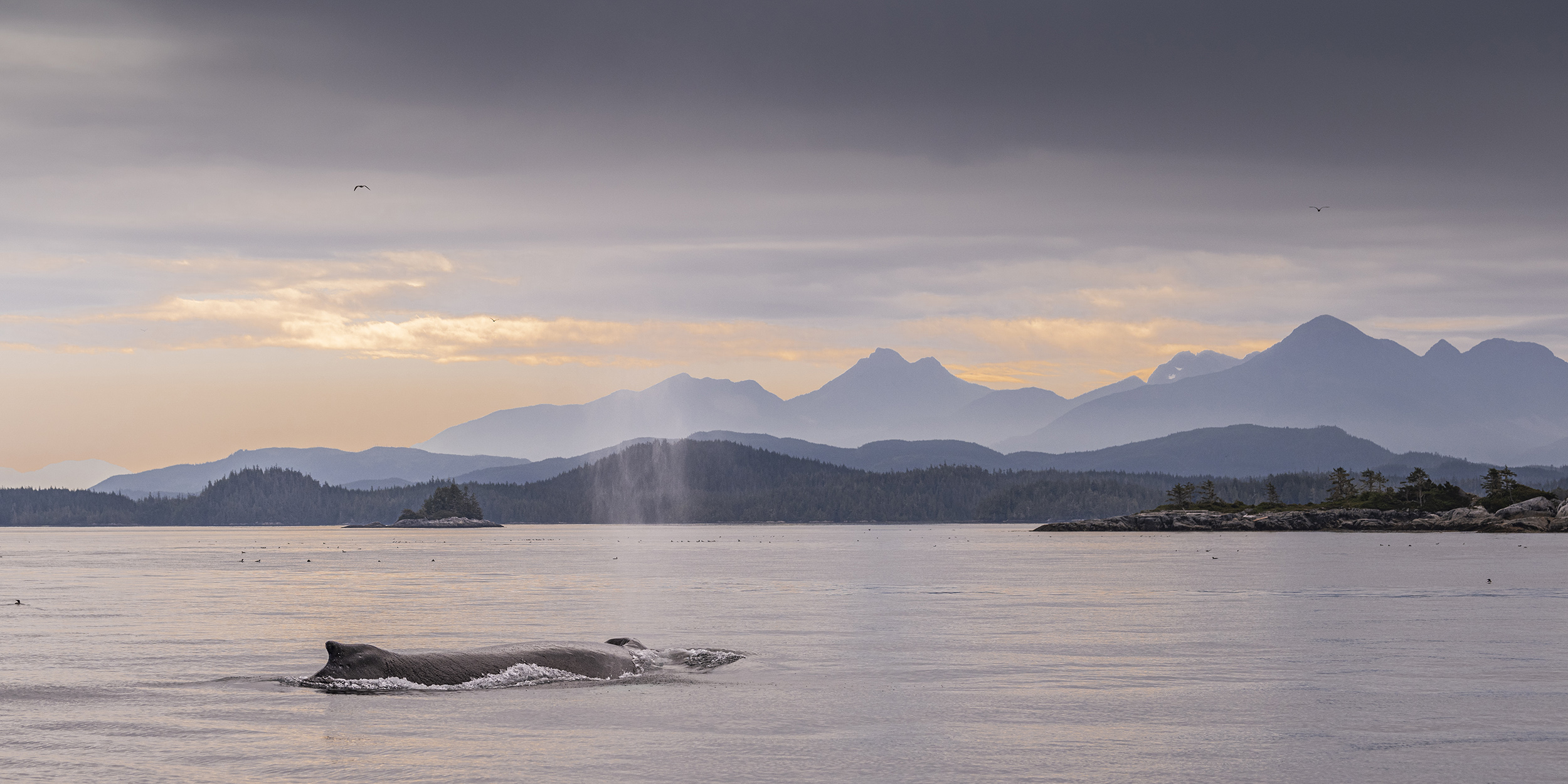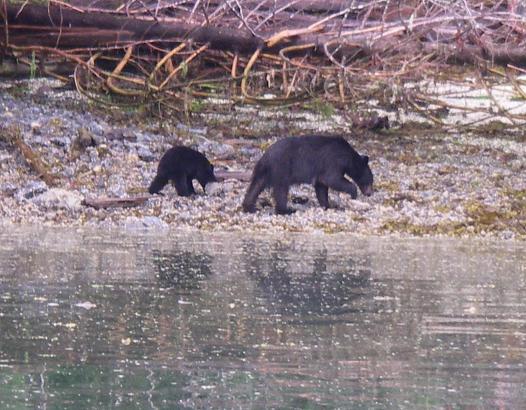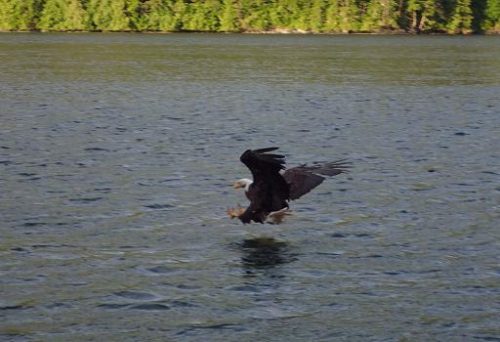 This bald eagle was coming in to pick up a rock fish to take back to it’s young in the nest behind our lodge. Know these facts because if you are visiting our lodge when there are rock fish leftover from a fishing trip we feed the eagle. Pavlov‘s dog psychology also works on bald eagle: whistle, wave a fish and good photo opportunity occurs.
This bald eagle was coming in to pick up a rock fish to take back to it’s young in the nest behind our lodge. Know these facts because if you are visiting our lodge when there are rock fish leftover from a fishing trip we feed the eagle. Pavlov‘s dog psychology also works on bald eagle: whistle, wave a fish and good photo opportunity occurs.
Grizzly Bear and Wildlife Viewing Blog: Monthly Archives: December 2016
How Many Grizzly Bear Cubs 2 of 2
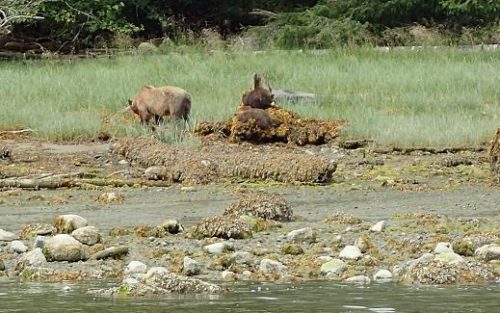 As in yesterdays post this mother grizzly had been turning over rocks. This inter-tidal zone “food” is high in protein and is made up of crab, clams, barnacles, amphipods and other tiny invertebrates. The “beach food” is important because plant food is relatively scarce during spring and bears will continue to loose weight until well into June. This photo from July 23 shows her triplets taking a break while mother continues to graze on the protein rich sedge grass.
As in yesterdays post this mother grizzly had been turning over rocks. This inter-tidal zone “food” is high in protein and is made up of crab, clams, barnacles, amphipods and other tiny invertebrates. The “beach food” is important because plant food is relatively scarce during spring and bears will continue to loose weight until well into June. This photo from July 23 shows her triplets taking a break while mother continues to graze on the protein rich sedge grass.
How Many Grizzly Bear Cubs 1 of 2
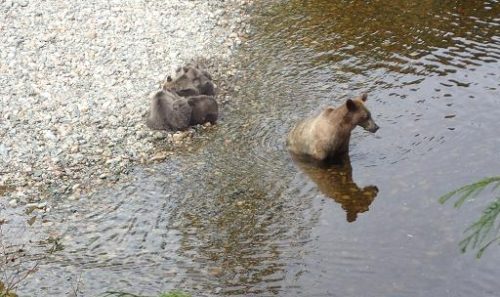 This photo was taken from the viewing stands on September 2 (we are permitted to use these platforms after August 24th). This mother grizzly had been fishing in the pool next to the stands for about forty-five minutes while the cubs roamed the gravel bar. (Note that the cubs to not like to get wet unless force by their mother to cross the river.) The four cubs finally tired of their play and curled up for a nap while heir mother come closer to stand guard.
This photo was taken from the viewing stands on September 2 (we are permitted to use these platforms after August 24th). This mother grizzly had been fishing in the pool next to the stands for about forty-five minutes while the cubs roamed the gravel bar. (Note that the cubs to not like to get wet unless force by their mother to cross the river.) The four cubs finally tired of their play and curled up for a nap while heir mother come closer to stand guard.
Grizzly Bears in Glendale River Estuary 2 of 2
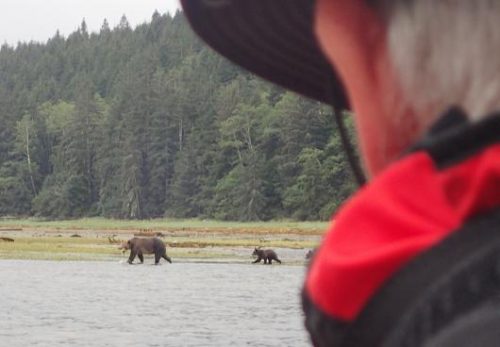 .. and I remember this morning because as the bears turned and came toward our boat I knew that if I did not move into deeper water and give them room they would have turned into the estuary. If that happened we would not have had the good viewing and photo opportunities which occurred. The distance to the grizzly mother and cubs less than thirty meters (yards).
.. and I remember this morning because as the bears turned and came toward our boat I knew that if I did not move into deeper water and give them room they would have turned into the estuary. If that happened we would not have had the good viewing and photo opportunities which occurred. The distance to the grizzly mother and cubs less than thirty meters (yards).
Grizzly Bears in Glendale River Estuary 1 of 2
 Grizzly bear viewing, prior to August 25, takes place in Knight Inlet’s Glendale River estuary. We travel from the lodge for an hour and ten minutes to the estuary and then transfer to a flat bottom skiff that allows us to move up river in the shallow water. This photo taken on August 18 at low tide as this mother and cubs were walking across the mouth of the estuary next to the “in coming tide”…
Grizzly bear viewing, prior to August 25, takes place in Knight Inlet’s Glendale River estuary. We travel from the lodge for an hour and ten minutes to the estuary and then transfer to a flat bottom skiff that allows us to move up river in the shallow water. This photo taken on August 18 at low tide as this mother and cubs were walking across the mouth of the estuary next to the “in coming tide”…
Black Bears Foraging
Your guide often says, “Black bears are where you find them.” This means although we do a black bear tour on your first evening in the lodge we are constantly looking for black bears. Running up Knight Inlet on a grizzly bear tour, across to Thompson Sound on the extra day in the lodge or out to Johnstone Strait is search of orca and whales we are always watching the shore for bears. This mother and cub were on a whale watching safari and were cooperative enough to stay on the beach for over half an hour. As you can see the cub was in step with mother and followed her example.
Dolphins Do Like to Play
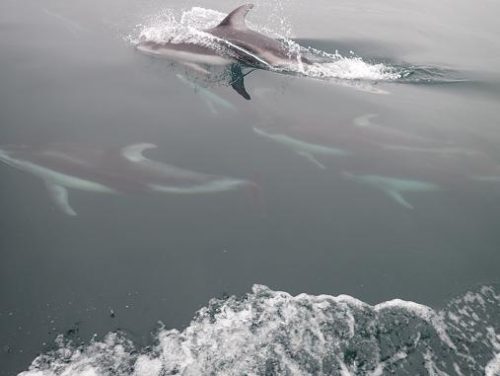 Pacific white-sided dolphins are found continuously throughout the north Pacific. In British Columbia, it is estimated that approximately 25,000 Pacific white-sided dolphins reside along our coast. These dolphins are opportunistic predators feeding on over 60 species of fish and 20 species of cephalopods. In BC, they feed on at least 13 different prey species, including salmon, herring, Pollock, shrimp, sablefish, smelt, and squid. They forage cooperatively, though large groups may separate into smaller sub-groups for foraging purposes. These feeding groups have been observed corralling and herding fish in a coordinated fashion. They are covered by the “Whales Watching Guidelines” in that we are required to keep back 100 meters (yards) while viewing, however they do not appear to read these guidelines and always want to play with the boat.
Pacific white-sided dolphins are found continuously throughout the north Pacific. In British Columbia, it is estimated that approximately 25,000 Pacific white-sided dolphins reside along our coast. These dolphins are opportunistic predators feeding on over 60 species of fish and 20 species of cephalopods. In BC, they feed on at least 13 different prey species, including salmon, herring, Pollock, shrimp, sablefish, smelt, and squid. They forage cooperatively, though large groups may separate into smaller sub-groups for foraging purposes. These feeding groups have been observed corralling and herding fish in a coordinated fashion. They are covered by the “Whales Watching Guidelines” in that we are required to keep back 100 meters (yards) while viewing, however they do not appear to read these guidelines and always want to play with the boat.
Curious Grizzly Bear 2 of 2
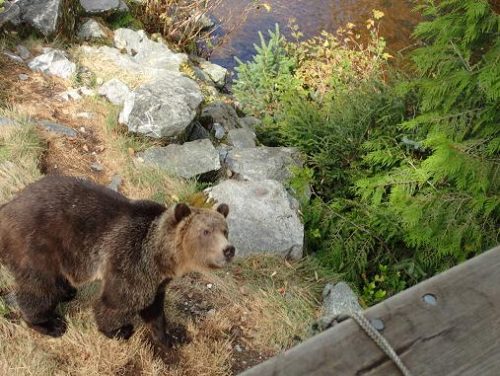 The viewing platform is in corner of the photo and the rock it was standing on in previous post is not far from the grizzly. The top of the railing is about four meters (12 feet) from the ground so you can judge how close the bear came before it passes under the stand.
The viewing platform is in corner of the photo and the rock it was standing on in previous post is not far from the grizzly. The top of the railing is about four meters (12 feet) from the ground so you can judge how close the bear came before it passes under the stand.
